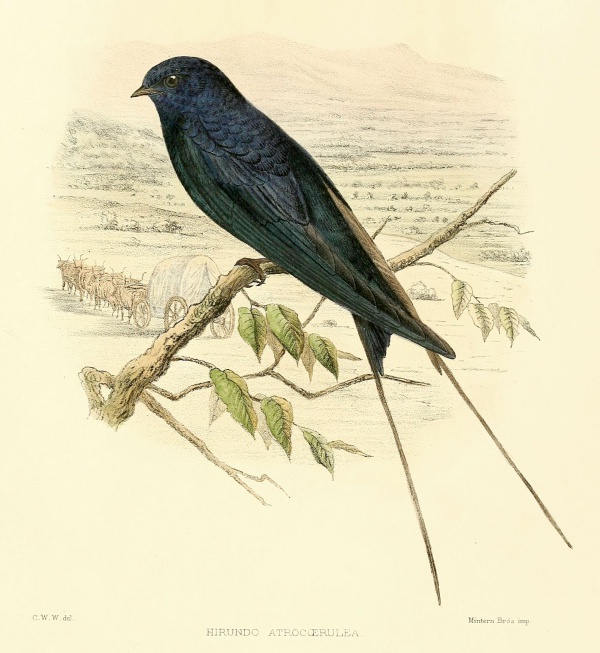Facts About Blue swallow
The blue swallow, a delightful small bird from the swallow family, belongs to the order Passeriformes. These birds exhibit similar habits and appearances to other aerial insectivores like martins and swifts. Blue swallows breed in the mountainous regions of Africa and migrate to areas north of Lake Victoria during the winter months. They favor montane grasslands for nesting and prefer open grasslands with scattered bushes and trees for their wintering grounds. Typically, they build their nests on the roof or side of a cavity in the ground.
Blue swallows are small, adorned with a striking metallic steel-blue color and long tail streamers, which are more pronounced in males. They also have white feathers on their rump and flanks that become visible when they preen or during courtship displays. Young blue swallows start out brownish-grey and turn blue as they mature. Their call is a melodious "bee-bee-bee-bee."
These birds primarily feed on small flies and other arthropods, catching them while in flight. They arrive at their breeding grounds in late September and construct cup-shaped nests from mud and grass within sinkhole cavities or burrows. Blue swallows practice cooperative breeding, lining their nests with grass, animal hair, and white feathers. Typically, they lay three eggs, which the female incubates for about 14 days. Once hatched, the chicks are fed for roughly 22 days until they are ready to fledge. Often, blue swallows will raise a second brood before migrating back to their wintering grounds in April.
Unfortunately, the blue swallow is considered Vulnerable due to habitat destruction at both their breeding and wintering sites. The current population is estimated to be between 1,500 and 4,000 individuals, and it is on the decline. The biggest threat to these beautiful birds is the loss of their natural habitat.

 Uganda
Uganda